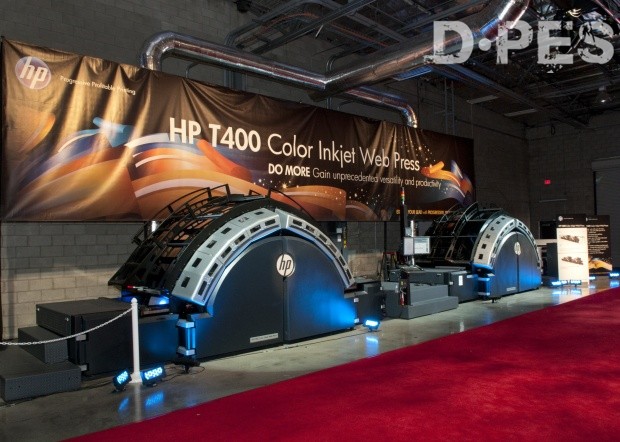For all of us, one way or another, this has been a trying year. The sad news from manroland and share prices collapsing world-wide are just part of the malaise that has spread month by month throughout industry, including the commercial print sector. However it hasn't all been grim, particularly for companies in the digital printing business, so it is important to keep the traumas in perspective as part of a larger pattern of change. Print is a service industry, working to serve a broad range of markets, markets which are overwhelmed with media choices and digital options for meeting their customers' information needs. Print in 2011 has done a pretty good job of embracing new technologies and coming up with interesting business models. Developers in turn have continued to produce ideas to meet those changing needs.
For instance, the new Océ 3500 digital press introduced in November 2010 has been lapped up. The first of these 75m/min beasts was installed at Corus in France. It prints up to six colours including MICR to produce 60,600 A4 pages per hour. Since introduction installations are approaching 50 units, and HP has done equally well with its Inkjet Web Press introduced at the last drupa, so someone somewhere is buying a lot of print.

Advances in materials science will allow beasts such as this HP machine to run even quicker
These aren't the only technology success stories this year. All around the world digital press manufacturers claim to be seeing relatively healthy sales, despite the harsh business climate. Increasingly we are seeing the internet driving publishing and print processes. Our favourite example of this is Simon's Cat. Simon started posting videos of his work on YouTube and now has a commercial website selling everything from soft toys to books and posters. A great deal of it conventional long-run print and some of it is on-demand. Although the on-demand print model still only accounts for a tiny fraction of print sold, gradually business models to support it are evolving.
We are in the midst of dramatic change, where traditional companies are undergoing painful reinventions and where the infrastructure for distributed digital print media production is steadily being laid down. This gradual dismantling of the old and creation of the new environment has been happening for a number of years, and will be yet more evident in 2012. There will be some spectacular failures next year, and some near death experiences, with further consolidation, particularly amongst press manufacturers.
We expect to see digital manufacturers such as Xerox and Canon making further announcements about their cloud computing strategies. Ink-jet printing systems will be part of all major manufacturers' portfolios, either through their own developments such as Ricoh's, or through co-operations. Advances in materials science will mean that these systems will be capable of extreme speeds and substrate flexibility, making the ink-jet digital printing sector even more competitive. There will also be some important developments in the toner world, with larger-format commercial printing devices expected and machines that can print fluorescents and perhaps even metallics. All of this innovation will be a good thing for customers, but it could lay the seeds for further carnage, unless world-wide economies stabilise.
For production print the bellwether event for 2012 will of course be drupa. But although drupa has huge significance for the industry, we are concerned that numbers will not be as impressive as they have been in the past. The greatest attention from the press and analysts community will be for the new ink-jet engines, and for how they will be positioned in an increasingly schizoid market. Screen and Fujifilm should be debuting their ink-jet digital presses, which were curiously positioned as offset replacements last time we checked. The idea that ink-jet printing could replace offset at this point in its development is frankly queer, so it will be interesting indeed to see how the market responds.
Social media will also be an important area of development in 2012. Online services ought to be a big driver for remote print media production, with both EFI with PrintMe and HP with ePrint looking to leverage the cloud and digital infrastructure to drive pages to their devices.
Whatever next year brings to the wider market and to your particular niche, we wish you the best of it.